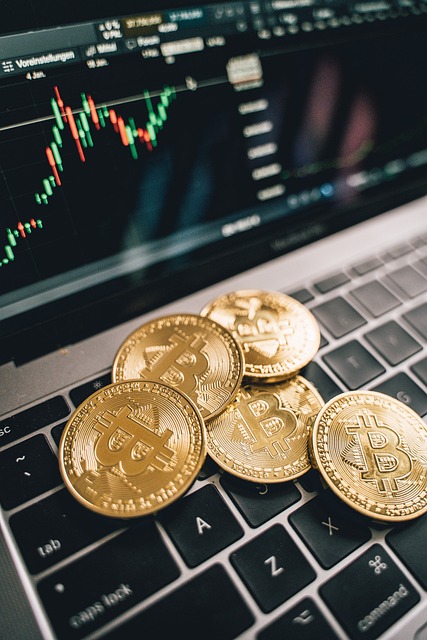Setting up a secure crypto wallet is vital for protecting cryptocurrencies like Bitcoin and Ethereum, using cryptographic keys instead of banks. Hardware wallets are the safest, storing keys offline, while software wallets need robust security like encryption and two-factor authentication to ward off cyber threats. Beginners should opt for reputable wallets with features like cold storage and multi-signature auth, creating a strong recovery phrase stored securely offline. Regular updates and physical backups enhance protection against online vulnerabilities.
In today’s digital landscape, understanding cryptocurrency wallets is paramount. This comprehensive guide delves into the intricacies of setting up a secure crypto wallet, your digital safe for valuable assets. We explore essential security measures like encryption and backup, helping you safeguard your investments. Additionally, we offer beginner-friendly insights on choosing the right default wallet and provide a step-by-step setup guide. Learn best practices for maintenance and updates to ensure optimal safety for your cryptocurrency holdings.
- Understanding Crypto Wallets: The Digital Safe for Your Assets
- Security Measures: Protecting Your Cryptocurrency with Encryption and Backup
- Choosing the Right Default Wallet: Factors to Consider for Beginners
- Setting Up Your Wallet: Step-by-Step Guide for a Secure Experience
- Best Practices: Maintaining and Updating Your Crypto Wallet for Optimal Safety
Understanding Crypto Wallets: The Digital Safe for Your Assets

In the realm of cryptocurrency, a digital wallet serves as the equivalent of a physical safe for your valuable assets. It’s a software program that allows users to store, send, and receive digital currencies like Bitcoin or Ethereum securely. Unlike traditional banking systems, crypto wallets don’t rely on intermediaries like banks to hold your funds. Instead, they use cryptographic keys to ensure the safety and ownership of your cryptocurrencies.
Setting up a secure crypto wallet is crucial for protecting your investments. There are various types of wallets available, each with unique features and security measures. Hardware wallets, for instance, offer the highest level of security by storing your private keys offline, making them less susceptible to cyber threats. On the other hand, software wallets, which can be further categorized into mobile or desktop versions, provide convenience but require robust security practices like enabling two-factor authentication and keeping software up-to-date to safeguard against potential vulnerabilities.
Security Measures: Protecting Your Cryptocurrency with Encryption and Backup

When it comes to safeguarding your cryptocurrency, implementing robust security measures is non-negotiable. Encryption plays a pivotal role in this process, acting as a sturdy fortress that protects your digital assets from unauthorized access. By employing advanced encryption protocols, you ensure that even if someone gains physical access to your devices, they won’t be able to decipher the coded information without the corresponding decryption keys.
Moreover, setting up a secure crypto wallet is an integral part of this security framework. Wallets serve as digital safes, storing your private keys and enabling transactions. Opting for reputable wallets that offer features like cold storage, two-factor authentication, and regular backups significantly enhances your protection. Regularly backing up your wallet across multiple secure locations acts as a safety net, ensuring that you can regain access to your funds even if your primary wallet or device suffers an unfortunate loss or breach.
Choosing the Right Default Wallet: Factors to Consider for Beginners

When setting up your first cryptocurrency wallet, selecting the appropriate default wallet is a crucial step for beginners. There are several factors to keep in mind to ensure both security and usability. Firstly, consider the level of security offered by the wallet. Look for features like cold storage, multi-signature authentication, and encryption to protect your funds from unauthorized access.
Additionally, choose a wallet that suits your experience level and needs. For instance, beginner-friendly mobile wallets provide an intuitive interface, making them easy to use on-the-go, while desktop wallets offer more advanced features for tech-savvy users who want granular control over their private keys. Remember, a secure crypto wallet is the cornerstone of your digital asset security, so choose wisely based on your comfort level and desired functionality.
Setting Up Your Wallet: Step-by-Step Guide for a Secure Experience

Setting up your own crypto wallet is an essential step in securing your digital assets. Here’s a straightforward guide to help you establish a safe environment for managing your cryptocurrencies. Begin by selecting a reputable and secure wallet software that aligns with your needs, whether it’s a desktop, mobile, or hardware option. Download the appropriate application from its official website to ensure authenticity.
During setup, create a strong recovery phrase—a series of words that will allow you to regain access if needed. Store this phrase securely in a password manager and keep it offline. Avoid sharing your recovery phrase with anyone. Once configured, review the wallet’s security features, like encryption and two-factor authentication, ensuring they are enabled for optimal protection.
Best Practices: Maintaining and Updating Your Crypto Wallet for Optimal Safety

When it comes to safeguarding your digital assets, setting up and maintaining a secure crypto wallet is non-negotiable. The first step is choosing a reputable wallet provider that offers robust security features like multi-factor authentication (MFA) and encryption for all stored funds. Next, enable two-factor authentication on your wallet to add an extra layer of protection. Regularly updating your wallet software is also crucial as updates often include bug fixes and security enhancements.
For optimal safety, keep your wallet’s private keys secure and never share them with anyone. Consider using a hardware wallet for even greater protection, as these devices store your keys offline, making them immune to online threats. Additionally, regularly backup your wallet’s seed phrase in a secure, physical location. By following these best practices, you can ensure that your crypto assets remain safe and accessible in the ever-evolving digital landscape.
In summary, securing your cryptocurrency through proper wallet management is paramount. By understanding crypto wallets, implementing robust security measures like encryption and backup, and choosing the right default wallet for your needs, you can ensure a safe and secure experience. Follow our step-by-step guide to set up a secure crypto wallet and adopt best practices to maintain its integrity over time. Remember that with great power comes great responsibility; protect your digital assets wisely.
